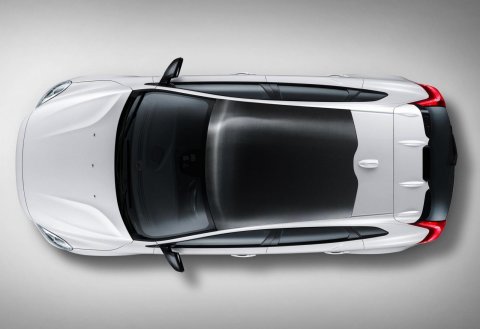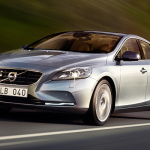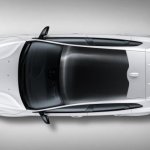Developed by Volvo in collaboration with the Polestar skunkworks, the Volvo V40 Carbon is a limited-run of only 343 vehicles, slated to sold in Sweden, Finland, France, The Netherlands and Japan. So what makes this family-hauling V40 compact hatchback special?
If carbon fiber is still regarded as special these days, then the roof, rear spoiler and diffuser, mirror caps and door sills are the name of the game. If you can look beyond the CFRP brouhaha, you might be more interested about how the Polestar gang “transferred the same development philosophy as when optimizing race cars to the new optimization for the V40 Carbon.”
Speaking of optimization, the T5 powerplant produces 253 HP and 400 Nm (295 lb-ft) while the D4 is rated 200 HP and 440 Nm (325 lb-ft). These output figures represent an increase of 25 HP/50 Nm and 16 HP/40 Nm over the standard specification V40 T5 and D4.
Volvo claims that Polestar engineers made the V40 a better handling machine by utilizing some mods for “faster and more exact responses to [the driver’s] commands.” The emphasis was put on a predictable behavior. Five areas of the 2015 Volvo V40’s oily bits have been enhanced to make the V40 Carbon edition happen: the engine performance, gearshift speed, hold and precision, throttle and off-throttle response.
The vice president of special products at Volvo Cars, Anders H. Gustavsson, declared: “We have created a car that is both refreshing high-tech and sporty. It is a limited edition intended for customers who want to stand out.” The R-Design-based V40 Carbon will be rolled out at the end of June in T6, T5, D5 and D4 guises.
Standard equipment includes 19-inch wheels and black exhaust pipes, a rearview parking camera and many more. In Sweden, the car costs 369,900 krona, the equivalent of $44,410 or €39,955 at current rates.

















